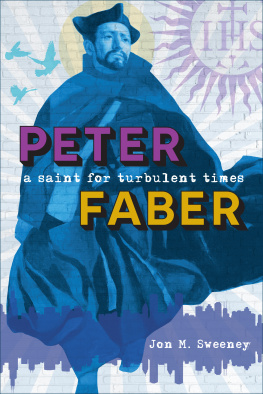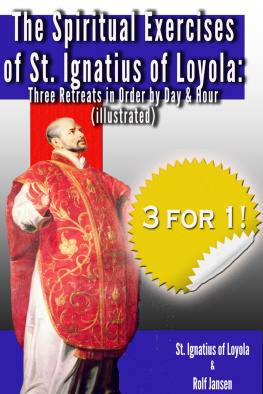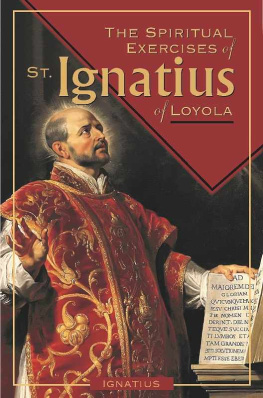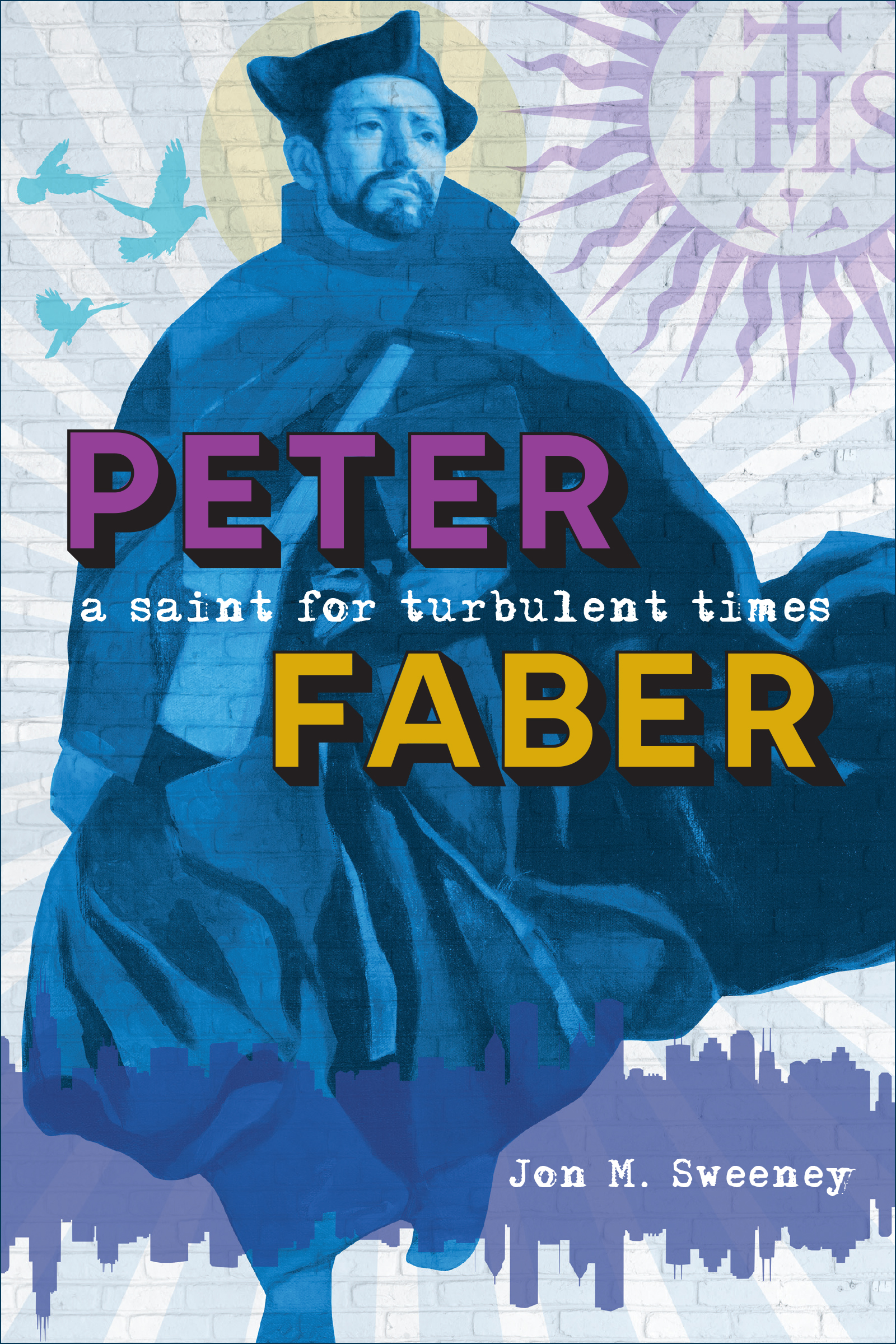
3441 N. Ashland Avenue
Chicago, Illinois 60657
(800) 621-1008
www.loyolapress.com
2021 Jon M. Sweeney
All rights reserved.
Author photo: Maury Woll, Cover art: ziggymaj/Digital Visions Vectors/Getty Images, Gary Kelly, Potapov Alexander/Shutterstock, 123ducu/iStock/Getty Images, The Crosiers/Gene Plaisted, OSC.
eBook ISBN: 978-0-8294-4523-7
Based on the print edition: 978-0-8294-4522-0
Library of Congress Control Number: 2020939167
20 21 22 23 24 EPUB 5 4 3 2 1
Master Pierre says he has no wish to have zeal for the execution of Gods justice... but only zeal for mercy.
Teachings of Pierre Favre
His was... a restless, unsettled spirit that was never satisfied.
Pope Francis, speaking about Peter Faber
I couldnt find Peter Faber anywhere. After reading reminiscences and letters of St. Ignatius of Loyola and also the life of St. Francis Xavierthe two recognized stars among the founding members of the Society of Jesusit was almost as if Faber hadnt existed. Even a new textbook of primary sources from the founding generation, Jesuit Writings of the Early Modern Period, yielded nothing.
But more than a few Jesuit friends had said to me over the years that Faber was the one to whom they most often turned for guidance and inspiration. Hes my favorite Jesuit, one said. Faber represents the real heart of what it all means, said another.
So, why was it so hard to find him? How had he slipped away unnoticed from the history of those formative years in Europe? Why does he play such a small part in the early histories of the Jesuits? I knew the Society of Jesus was founded by three menIgnatius, Xavier, and Peter Faberat a time when Christians seemed to be at one anothers throats. The four decades of Fabers life coincided with the world reinventing itself.
Geographically, Columbus had just inaugurated transatlantic navigation, opening avenues to conquest and colonization for European powers. Four years earlier, the Portuguese nobleman Bartholomew Diaz had rounded the Cape of Good Hope (the southernmost tip of Africa), passing from the mighty Atlantic to the Indian Ocean. This was how Fabers friend, Xavier, was to travel to India, Japan, and China, following on the heels and vessels of the Kingdom of Portugal, the first of the colonial empires.
Politically, nations were aligning along religious lines, as there were suddenly more churches in the West than just Roman Catholic ones, and additional authorities in the church besides the pope. Protestant (the word comes from protest) reformers had emerged a century earlier in outlying regions of the Holy Roman Empire in the form of the English preacher John Wycliffe and the Bohemian priest Jan Hus. By the time Faber was a teenager, German princes felt emboldened to support a young friar-theologian, Martin Luther, in his disputes with the Catholic Church and to declare a national church in Germany to challenge Rome. Wherever there was significant interest and intervention by political leaders, the Reformation tended to succeed.
Theologically, the Reformation was a dam that had loosed dangerous waters.
It was only half a century later when scientists, philosophers, and other churchmen felt empowered to question more than what Luther had challenged. Luther stuck to church matters, such as the meaning of sacraments and the value of priests. Fifty years later, though, others questioned the actual tentpoles of who we are and what life is about. The earth ceased to be understood as at the center of the universe (Giordano Bruno). The heavens were no longer unchanging or perfect (Galileo Galilei). And new means of pursuing knowledge declared every appeal to authority in such matters to be invalid (Ren Descartes, then others).
A door had closed. The medieval era had ended. Full stop.
The Society of Jesus was there while all this happened: Francis Xavier as one of the early sixteenth centurys trailblazing explorers and missionaries, and Ignatius of Loyola as one of that eras most influential figures involved in buttressing a teetering Christendom. But what about Peter Faber? I wanted to find the saint that people talked about, who was so important to the Jesuits and yet so unknown to the story of those times.
Then, during my search, on November 24, 2013, Pope Francis announced that he was canonizing this obscure sixteenth-century priest by means of equivalent canonization. This unusual way of making a saint means that the pope dispenses with some of the usual requirements and judicial procedures associated with the process. He can do so only if it is clear theres been a constant devotion to the person among the faithful, if historians have consistently attested to the character and virtue of the subject, and if there has been a steady stream of wonders and miracles associated with the subjects intercession. Pope Francis made clear that he and many others have long had a most sincere devotion to the new saint, a man, the pope said, capable of great and strong decisions but also capable of being so gentle and loving.
So, Faber, who had seemed to have been lost in the most turbulent, violent, and formative century in the history of the West, was found once again, at least in Rome.

Previous biographies of Peter Faber, with good and pious intentions, have pointed to testimonies given during 1598 hearings for Fabers beatification (he did make it that far four centuries ago) that made him out to be a simple boy of blessed disposition who grew to be a saintly man. His mind was always preoccupied with holy matters, the testimonies said, with stories of the young Faber precociously instructing others, like Christ in the temple, except that Peter was apparently just six or seven years old. Even the rock upon which the boy sat while sermonizing was remembered and commemorated. It was said that he fasted at times when others did not, and, who knows, perhaps he did, because children caught up in religious fervor are often the most dramatically ardent in shows of devotion. Then, when he was just ten, a desire began to burn in his pure soul with the intensity of the evening star in a clear sky.
These accounts could never satisfy the inquiries of a mind seeking the real Faber. I wanted to find this figure for myself, and Ive come to the search with the questions of one who sincerely loves the saints but also with the questions of a twenty-first-century person. In the process of looking, reading, and thinking, what I have discovered surprised me and left me wondering what might have been different in the turbulent sixteenth century if Faber had lived longeror if his lead had been followed.
To follow Faber and tell his tale, we will travel to many countries in Europe. Who he was is not easy to pin down or define. For example, consider his names. Born French, as Pierre Favre, halfway between Geneva and the Italian Po River valley, he spent the second half of his life traveling almost constantly, from Portugal to Spain to Germany to Italy and back again. But sometimes he wrote letters in Spanish, signing his name Fabro. Today, we know him as Faber, the Latinized version of his name, which was surely how he began spelling it when he arrived at university. These cosmopolitan qualities make him seem a bit like the most popular Catholic spiritual writer of the twentieth century, the Trappist monk Thomas Merton, who was born in France, then educated in England, lived mostly in Middle America, and passed away while traveling throughout the Far East. As someone who has studied Merton and found that his international identity is a key to seeing him as he was, I would say the same is true for understanding Faber.













